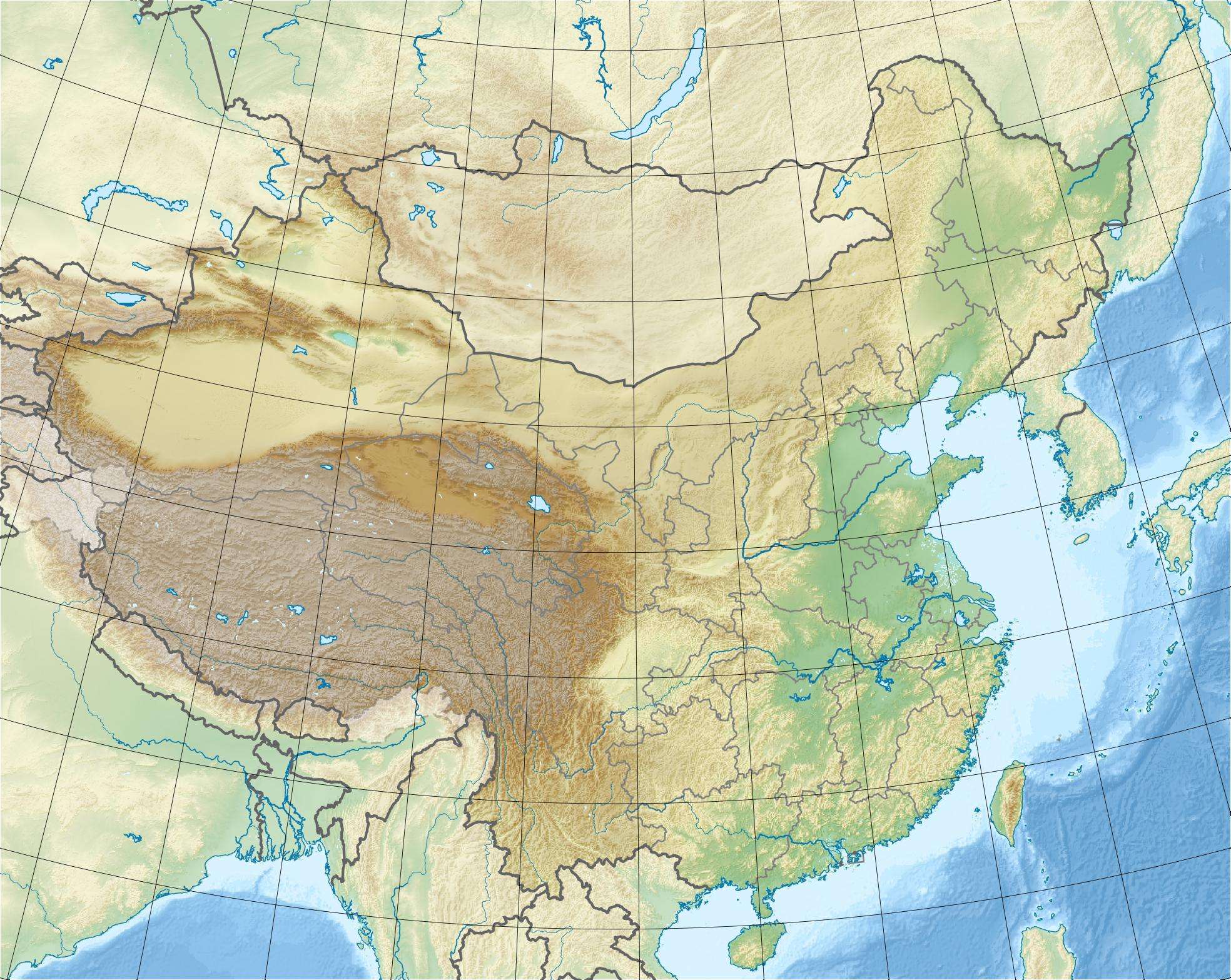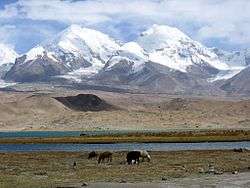Kongur Tagh
| Kongur Tagh | |
|---|---|
| Kongkhoerh | |
 South face of Kongur Tagh | |
| Highest point | |
| Elevation |
7,649 m (25,095 ft) [1] Ranked 37th |
| Prominence |
3,585 m (11,762 ft) [1] Ranked 49th |
| Isolation | 240 kilometres (150 mi) |
| Listing | Ultra |
| Coordinates | 38°35′39″N 75°18′48″E / 38.59417°N 75.31333°ECoordinates: 38°35′39″N 75°18′48″E / 38.59417°N 75.31333°E [1] |
| Geography | |
 Kongur Tagh China | |
| Location | Akto County, Xinjiang, China |
| Parent range | Kongur Shan |
| Climbing | |
| First ascent | 1981 by British team |
| Easiest route | rock/snow/ice climb |
Kongur Tagh or Kongkoerh (Uyghur: قوڭۇر تاغ, Коңур Тағ; Mongolian: Хонгор Таг, Hongor Tag; Chinese: 公格尔峰; pinyin: Gōnggé'ěr Fēng) (also referred to as Kongur) is at 7,649 m the highest mountain wholly within the Xinjiang Uyghur Autonomous Region in China.




Geography
Kongur Tagh is within a range called the Kongur Shan (Chinese: 公格尔山; pinyin: Gōnggé'ěr Shān.) Kongur Tagh is located just north of Muztagh Ata and visible from Karakul Lake. Some sources use "Kongur Shan" mistakenly to refer to the peak itself. The Kongur Shan range, including Muztagh Ata, is separated by the major Yarkand River valley from the Kunlun Mountains and thus is generally included in the "Eastern Pamirs" [2] Kongur Tagh is the highest peak in the Pamirs, and is higher than any peak in the Kunlun Range as well. Due to its remoteness and being hidden by nearby peaks, Kongur was not discovered by Europeans until 1900. However, the building of the Karakoram Highway from Pakistan to China, which runs past nearby Tashkurgan and Karakul Lake, has now made it more accessible.
Administratively, the Kongur Range is within Akto County.
Climbing history
The first attempt to climb Kongur Tagh was made in 1956 but the party aborted the attempt when it realized it was beyond their abilities.
The first ascent of Kongur Tagh was completed in 1981 by a British expedition consisting of Chris Bonington, Al Rouse, Peter Boardman and Joe Tasker.[3]
Elevation
This is taken from the Guide to Mountaineering in China. Some Chinese authorities give it 7,719 m, but evidence against this higher elevation is given here.
Kongur Tiube

Kongur Tagh has a significant subpeak known as Kongur Tiube (Chinese: 公格尔九别峰 which means in the local language "the mountain with a white cap",[4] also Kongur Tiubie / Jiubie and Kungur Tjube Tagh), 38°36′57″N 75°11′44″E / 38.61583°N 75.19556°E; elevation = 7,530 m (24,705 ft).Ranked 47th[5] It is moderately independent, with a topographic prominence of 840 m (2,756 ft). It was first climbed in 1956.
Footnotes
- 1 2 3 "China II: Sinkiang - Xinjiang". Peaklist.org. Retrieved 2014-05-26.
- ↑ N. O. Arnaud; M. Brunel; J. M. Cantagrel; P. Tapponnier (1993). "High cooling and denudation rates at Kongur Shan, Eastern Pamir (Xinjiang, China)". Tectonics Vol. 12 No. 3. American Geophysical Union Publications. pp. 1335–1346. Retrieved 2015-05-02.
- ↑ Ward (1983), pp. 146-148.
- ↑ Kongur Jiubie Peak (in Chinese)
- ↑ Kongur Tagh-Muztagh Ata Topographic Map, 1:100,000, by the Lanzhou Institute of Glaciology and Geocryology, Chinese Academy of Sciences, ISBN 7-80545-148-6.
See also
References
- Ward, Michael. (1983). "The Kongur Massif in Southern Sinkiang." The Geographical Journal, Vol. 149, No. 2 (Jul., 1983), pp. 137–152.
External links
| Wikimedia Commons has media related to Kongur. |
- "Kongkoerh, China". Peakbagger.com. Retrieved May 23, 2008.